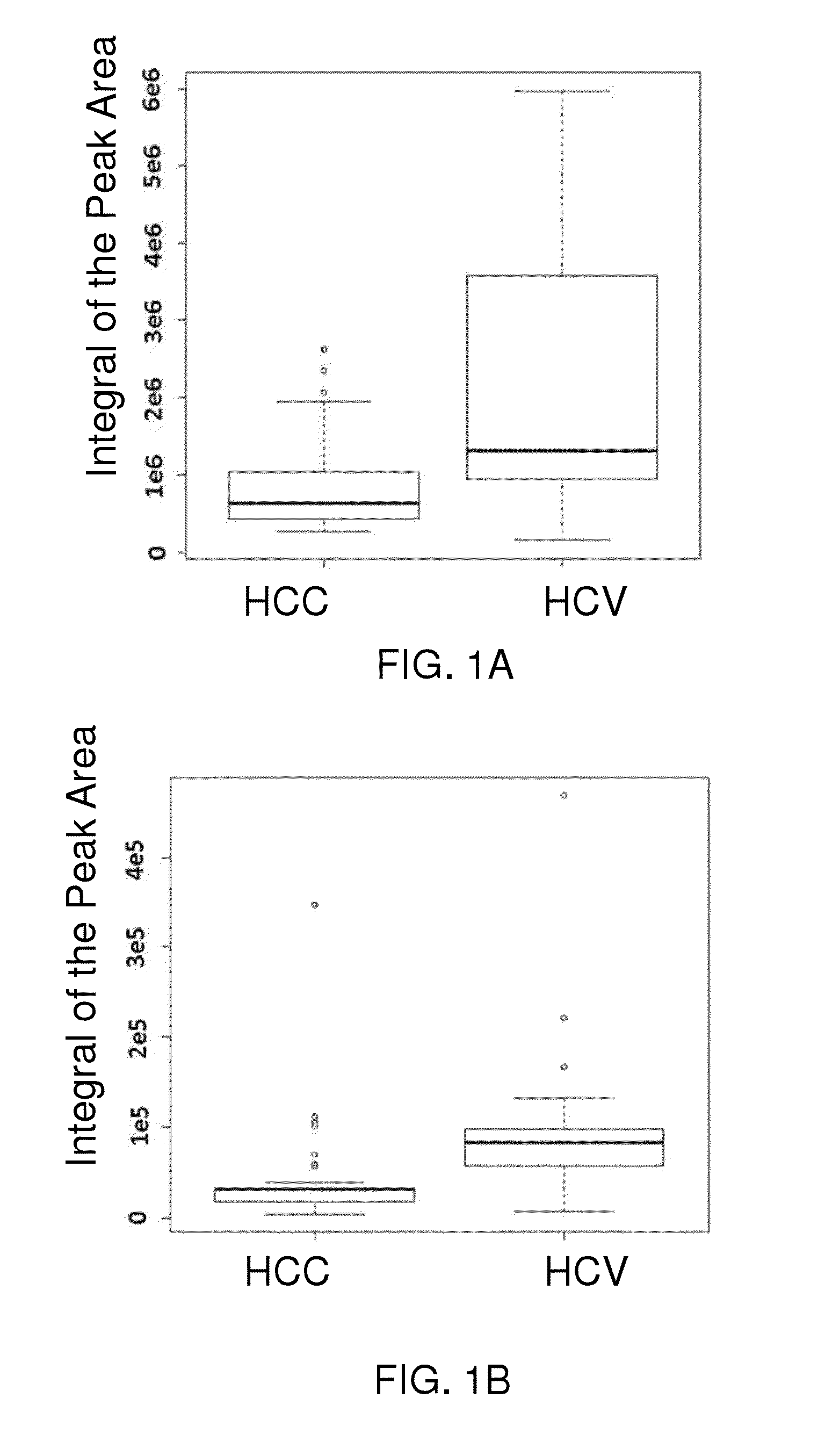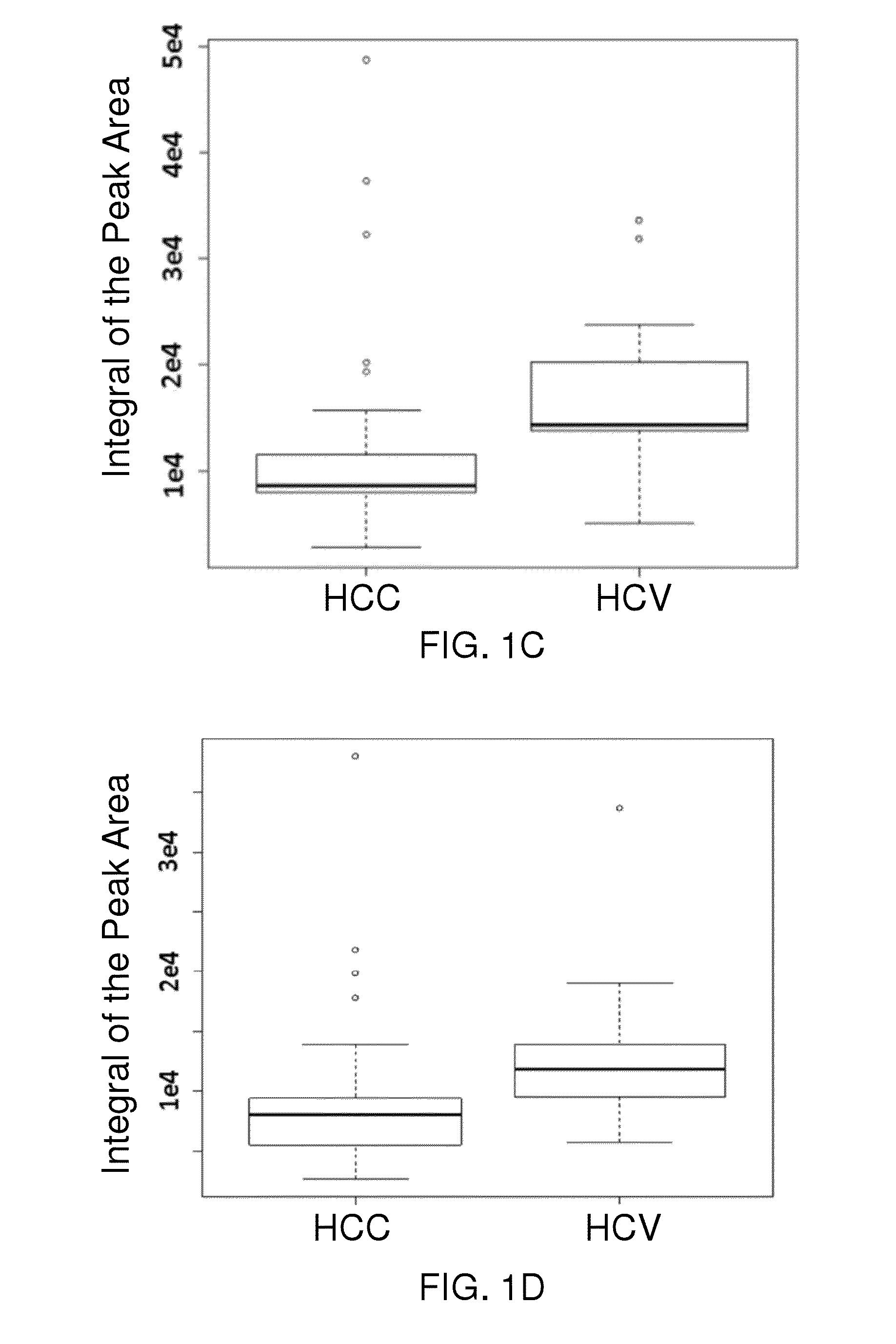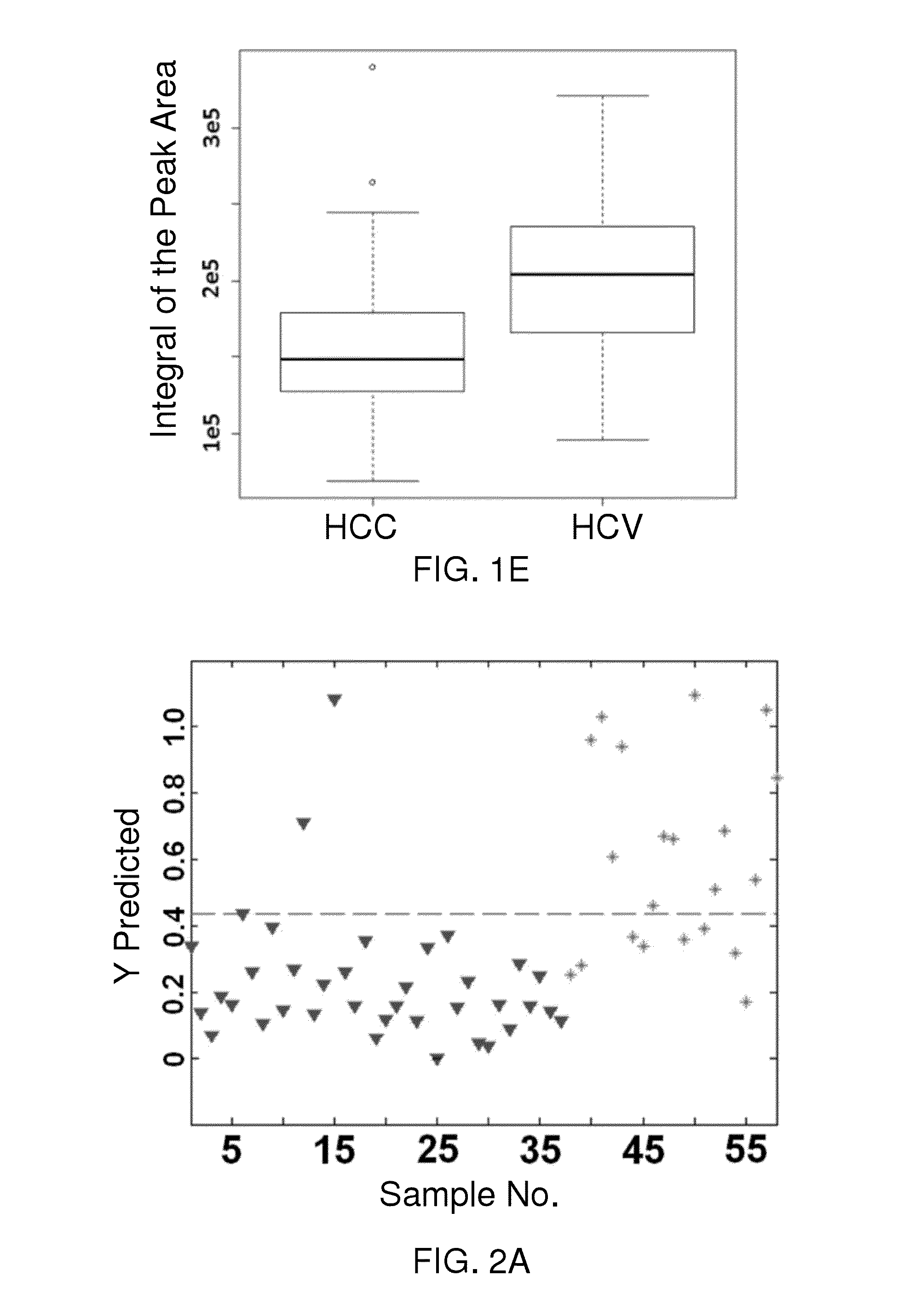Metabolite biomarkers for the detection of liver cancer
a liver cancer and metabolite technology, applied in the field of small molecule biomarkers, can solve the problems of high risk of developing hcc, inability to distinguish between acute and chronic infections, and none of the studies that focus exclusively on hcv patients' altered metabolic pathways
- Summary
- Abstract
- Description
- Claims
- Application Information
AI Technical Summary
Benefits of technology
Problems solved by technology
Method used
Image
Examples
example 1
[0180]As noted above, hepatocellular carcinoma (HCC) accounts for most cases of liver cancer worldwide, and infection with hepatitis C virus (HCV) is considered a major risk factor for liver cancer even when individuals have not developed clinical cirrhosis. Unbiased global metabolic profiling methods were applied to serum samples from patients with HCC and HCV infection in order to identify metabolite based biomarkers associated with the early stages of liver cancer for improved prognosis.
[0181]Serum metabolite profiles from patients with HCC (n=37) and HCV infected patients (n=21) were obtained using high performance liquid chromatography-mass spectrometry (HPLC-MS) methods. Five characteristic metabolites that differed significantly (p1.3) between HCC and HCV infection were identified. A partial least-squares discriminant analysis (PLS-DA) model created using the characteristic metabolites resulted in a good model with 92% sensitivity, 62% specificity, and a receiver operative ch...
example 2
[0197]In this Example, we focus on identifying additional metabolic changes and altered metabolic pathways between HCC patients with underlying HCV and HCV patients who are at high risk of developing HCC. To extend the coverage of low concentration metabolites that distinguish HCV and HCC, we have chosen a targeted method based on LC-MS / MS metabolite profiling of serum. This multiplexed targeted LC-MS / MS approach has been shown to be quite robust and versatile in a variety of biomarker and systems biology studies. In this study, a number of significant changes were observed in several important and cancer related metabolic pathways. Utilizing multivariate statistical analysis we could combine the top performing metabolite biomarkers into a model that distinguishes between the two patient groups with excellent performance. Monitoring metabolites in HCV patients may provide improved understanding of the timing and pathogenesis of HCC, and when further developed allow identification HC...
example 3
[0225]Hepatocellular carcinoma (HCC) accounts for most liver cancer cases worldwide. Infection with hepatitis C virus (HCV) is considered a major risk factor for liver cancer. To identify cancer risk, metabolic profiling of serum samples from patients with HCC (n=40) and HCV (n=22) was performed by 1H nuclear magnetic resonance spectroscopy. Multivariate statistical analysis showed a distinct separation of the two patient cohorts indicating a distinct metabolic difference between HCC and HCV based on signals from lipids and individual metabolites. Univariate analysis showed that three metabolites (choline, valine and creatinine) were significantly altered in HCC. A PLS-DA model based on these three metabolites showed a sensitivity of 80%, specificity of 71%, and area under the receiver operating curve of 0.83, outperforming the clinical marker alpha-fetoprotein (AFP). The robustness of the model was indicated by Monte-Carlo cross validation (MCCV). This study discloses a panel of me...
PUM
 Login to View More
Login to View More Abstract
Description
Claims
Application Information
 Login to View More
Login to View More - R&D
- Intellectual Property
- Life Sciences
- Materials
- Tech Scout
- Unparalleled Data Quality
- Higher Quality Content
- 60% Fewer Hallucinations
Browse by: Latest US Patents, China's latest patents, Technical Efficacy Thesaurus, Application Domain, Technology Topic, Popular Technical Reports.
© 2025 PatSnap. All rights reserved.Legal|Privacy policy|Modern Slavery Act Transparency Statement|Sitemap|About US| Contact US: help@patsnap.com



